The Story
The story of Wings Airways brings to life the romance and traditions of Alaska’s rich aviation history on the same waterfront where Juneau’s floatplane businesses began in the 1920’s. Experience, enthusiasm, pride, and drive are the essentials for Alaska bush pilots, and are the driving force behind the entire Wings Airways organization. We always enjoy sharing our passion and the history of these five magnificent aircraft with you.
Enjoy your flight and the nostalgia.
In 2002, an exciting prospect emerged for an exclusive group of employees of a locally owned Juneau former airline, Wings of Alaska. This group of dedicated professionals who had built and nurtured one airline used their extensive expertise to create another. With the purchase of the floatplane flightseeing portion of that commuter air service, Wings Airways took off. Wings Airways carries on the long tradition of locally owned and operated flights from the downtown harbor.
Wings Airways exclusively operates de Havilland Otters. The Otter is a single-engine, high-wing, propeller-driven, STOL aircraft developed by de Havilland Aircraft of Canada Ltd. There were a total of 466 of the DHC-3 aircraft produced from 1952 through 1967. It was capable of performing the same roles as the earlier and highly successful Beaver, but was overall a larger aircraft. The US Army was the largest customer for the Otter with a purchase of 190.
Between 2004 and 2008, all five Wings Airways’ Otters underwent engine conversions. The original Pratt & Whitney 600 horsepower radial engines were replaced with 900 horsepower Garrett turbo prop engines. At the time of these engine conversions Wings Airways also performed complete airframe overhauls, bringing all 5 aircraft into “as new” condition. New interiors were installed as well as a complete avionics upgrade to a standard to what is common in modern jet aircraft. We operate with a maximum cruising speed of 134 mph, with an average cruise speed of 125-130 mph. The gross weight at takeoff is approximately 7,900 lbs. These aircraft burn approximately 50 gallons of Jet A fuel per hour.
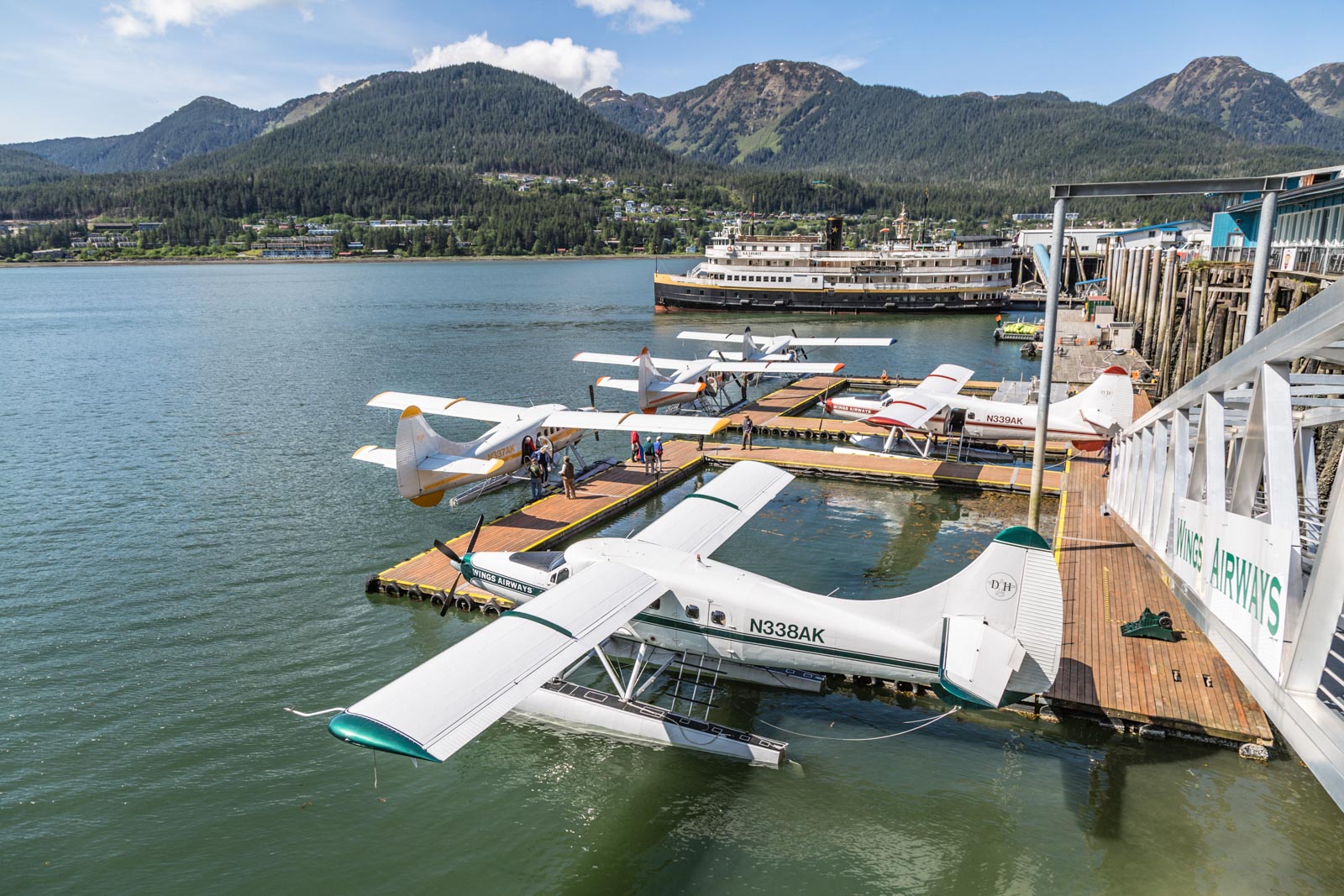
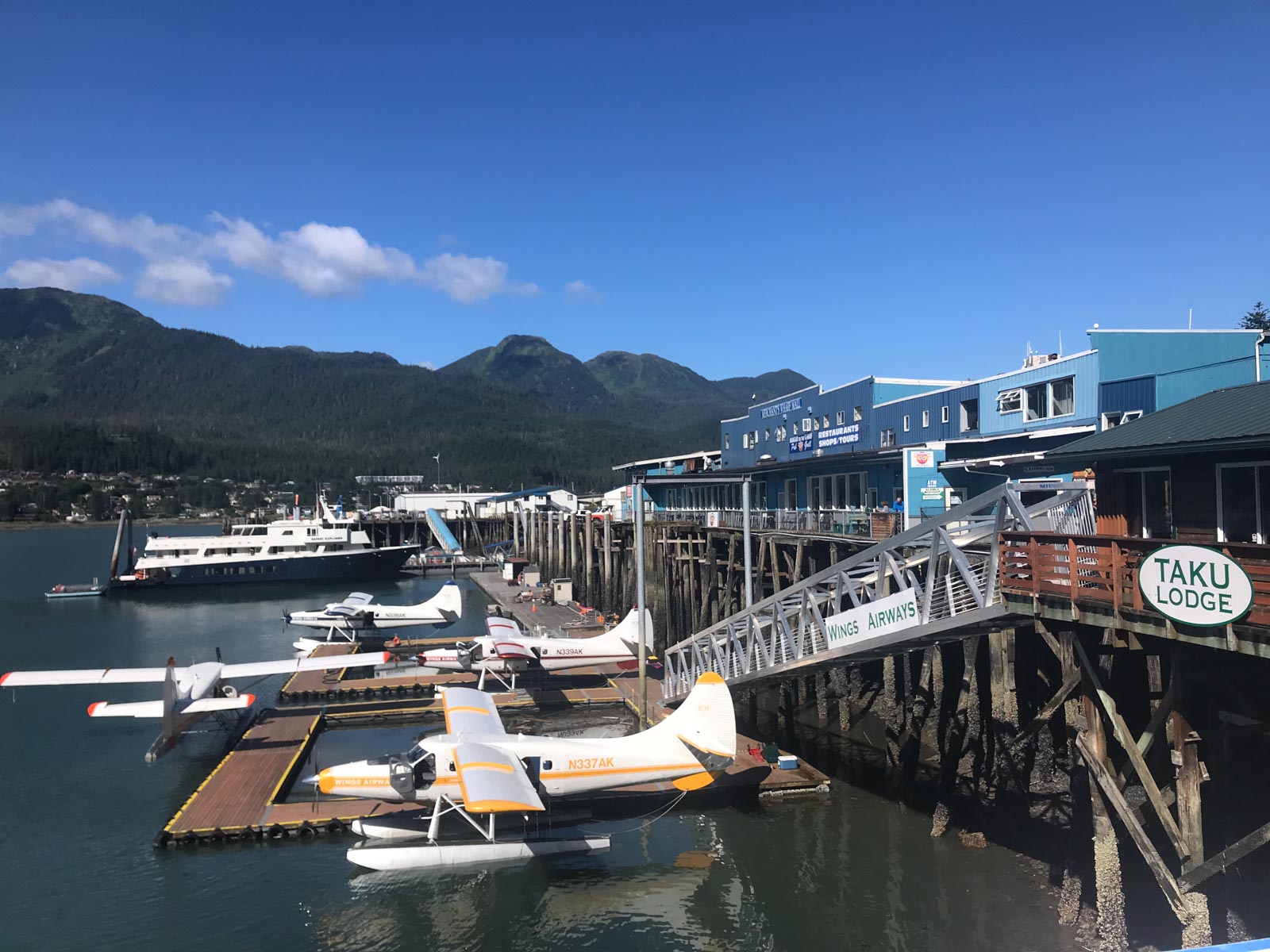
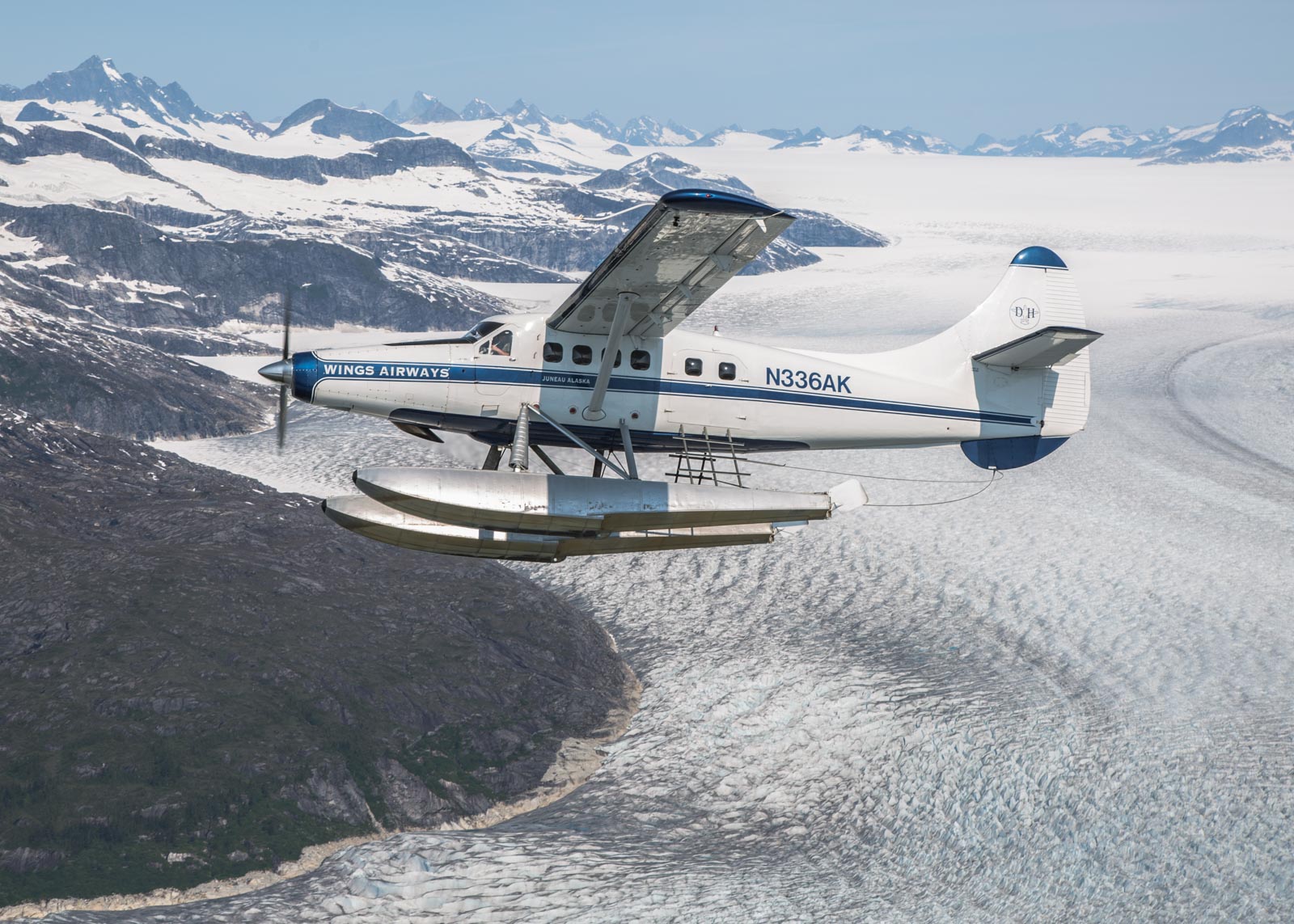
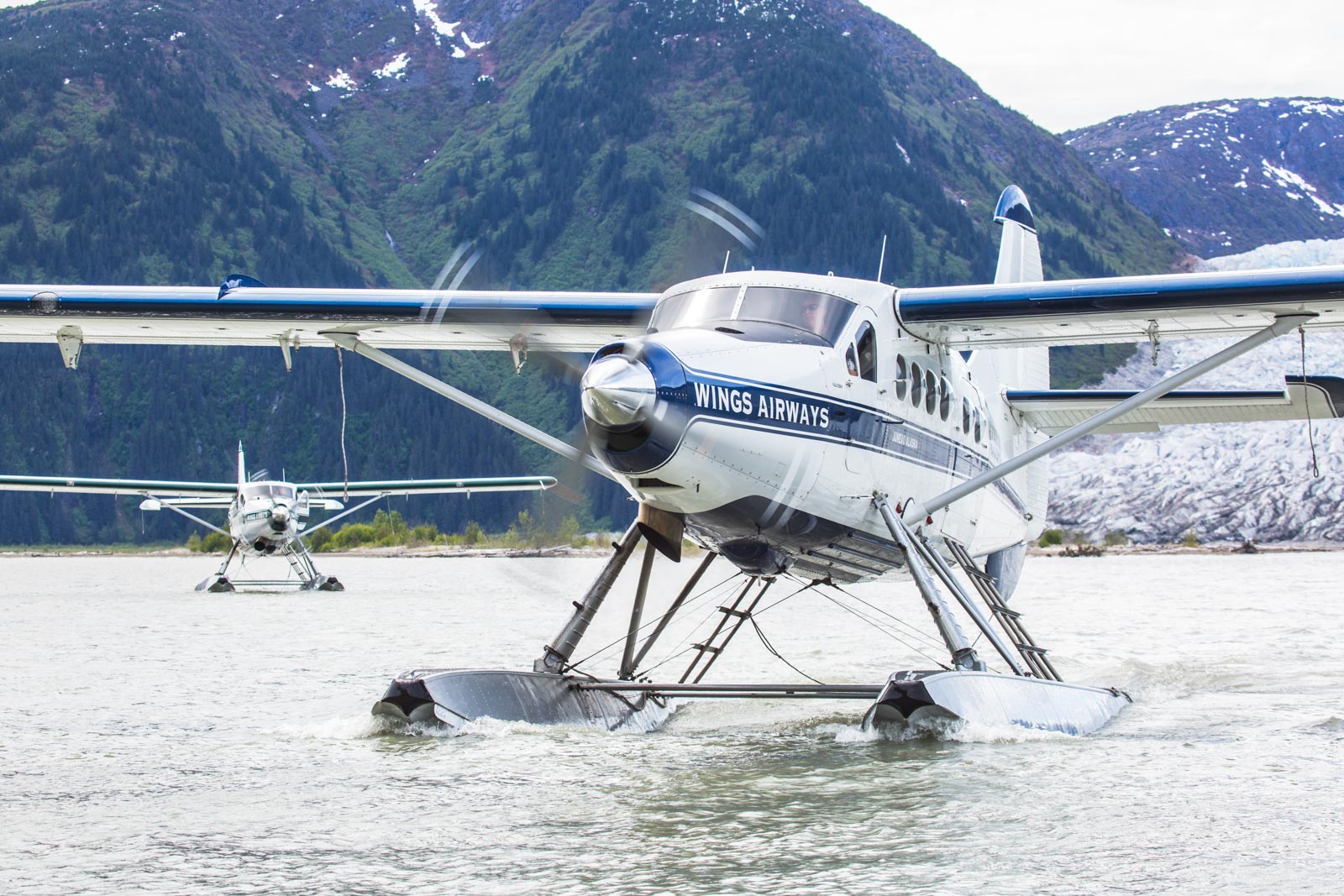
N336AK Blue Stripe
Built in 1958, the 333rd DHC-3 Otter built was delivered to the United States Army on June 26, 1959, where it was assigned to the 18th Aviation Company, Fort Riley, Kansas. Although that company deployed several its Otters to Vietnam in 1961, N336AK remained at Fort Riley.
The operation of these Otters was taken over by the 1063rd Aviation Company, a unit of the Iowa National Guard based at Waterloo, Iowa. In October 1961, this unit was upgraded to active duty status and sent to Fort Riley to operate the Otters which the 18th Aviation Company had left behind. The 1063rd operated N336AK until July 1962 at Fort Riley, when the Otter returned with the Company to Waterloo, Iowa, where it was operated until January 1964. It remained with the National Guard, but its subsequent operating units are not known until June 1972 when it joined the California National Guard, with whom it was to serve for the remainder of its military career. It was assigned to the Depot at Fresno, California as a support aircraft. Personnel at the Depot proudly referred to it as “the last active Army Otter west of the Rockies”. This was correct in so far as the continental United States was concerned, there being Army Otters active in Alaska at that time as well. N336AK continued to serve at Fresno until December 1976, when it was deleted from the Army inventory. The Otter was transferred to the Civil Air Patrol (CAP). It was noted at Boeing Field, Seattle during June 1977, still in its Army olive drab colors, and was assigned to the CAP’s Pacific Region. In January 1980, it was sold to Silver Pine Air Services Ltd. of Silver Falls, Manitoba who refurbished the Otter, and it was then sold to Parsons Airways Northern Ltd. of Flin Flon, Manitoba. For the next nine years, it served as one of a number of Otters flown in the northern Manitoba bush country. It was sold in May 1989 to Ketchum Air Service Inc. of Anchorage, Alaska.
The Otter was sold to Wings of Alaska in March 1993. It went on to be transferred to Wings Airways in 2002, where it later received its turbine conversion along with other substantial upgrades.
N337AK Yellow Stripe
Built in 1961, the 418th DHC-3 Otter built was delivered to the West African Ghana Air Force on May 8, 1961. It was the fourth of an order for twelve Otters, all of which were packed into crates and shipped directly to Ghana. Once there they were re-assembled and entered service based at Takoradi Air Base. The Otters were withdrawn from service in 1973 and put up for sale where brokers Masin Aircraft of Cologne, Germany acquired eight of the Otters. In March 1974, Masin Aircraft sold all of the Otters to Air Craftsmen Ltd. of St. John, New Brunswick, a company that specialized in the buying, refurbishing and selling of ex-military Otters. In April 1974, ferry pilots were employed by Air Craftsmen Ltd. to fly the Otters from Takoradi Air Base, Ghana, to St. John, New Brunswick. On June 23, 1974, the plane was routed Biarritz to London’s Gatwick Airport, continuing on to Fairoaks, where it was to remain for nearly two months while ferry tanks were installed. On August 28, 1974, it flew Fairoaks-Bembridge-Prestwick, before setting off on the long ocean crossing, via Reykjavik, Iceland, and Greenland to St. John, Canada. By September 1975, the Otter had been refurbished and was sold to Mr. Peter Pess of San Diego, California, who was involved with a Mexican airline known as Aerosierra de Durango. It was one of two Otters that set off from St. John, crossing the North American continent, to Brown Field, San Diego and then further south to their new base at Durango in Mexico. The two Otters were acquired to transport personnel to lumber camps high in the Sierra Madre mountains, their base at an altitude of 8,000 feet. Some of the dirt strips they flew into were over 13,500 feet up in the mountains. Both Otters were fitted with larger than usual propellers, to help them with these high altitudes. The Otters were operated in ‘high density’ configuration with eight rows of three-place benches. Despite these arduous conditions, they operated these services without mishap, and survived their adventures in the Mexican mountains.
In August 1976, a ferry permit was issued for the Otter to leave Mexico via Tijuana, with an ultimate destination of Edmonton. First, however, the Otter was flown to Brown Field, San Diego where it was to be overhauled before its next assignment. From San Diego the Otter continued on to Edmonton where on arrival it was registered to Mackenzie Air Ltd, based at Edmonton Municipal Airport. This company was a subsidiary of La Ronge Aviation Services Ltd who took over the aircraft on August 31, 1976, in La Ronge, Saskatchewan.
In November 1982, it was sold to Harold J. Hansen/General Aircraft Supplies of Boeing Field, Seattle. He sold it in April 1983 to Tyee Airlines Inc. of Ketchikan, Alaska, joining their existing fleet of Otters. In January 1985, Temsco Helicopters, another Ketchikan-based operator, purchased Tyee Airlines and its aircraft. By 1989, Temsco Airlines were operating a fleet of nine Otters. In 1991, Temsco decided to close down its fixed wing division, although the helicopter division continued on and operates today as the largest helicopter operator in Southeast Alaska. In 1993, Wings of Alaska purchased it to add to their fleet of Otters and Beavers. In April 2002, N337AK was included in the employee purchase where it operates today under Wings Airways Inc.
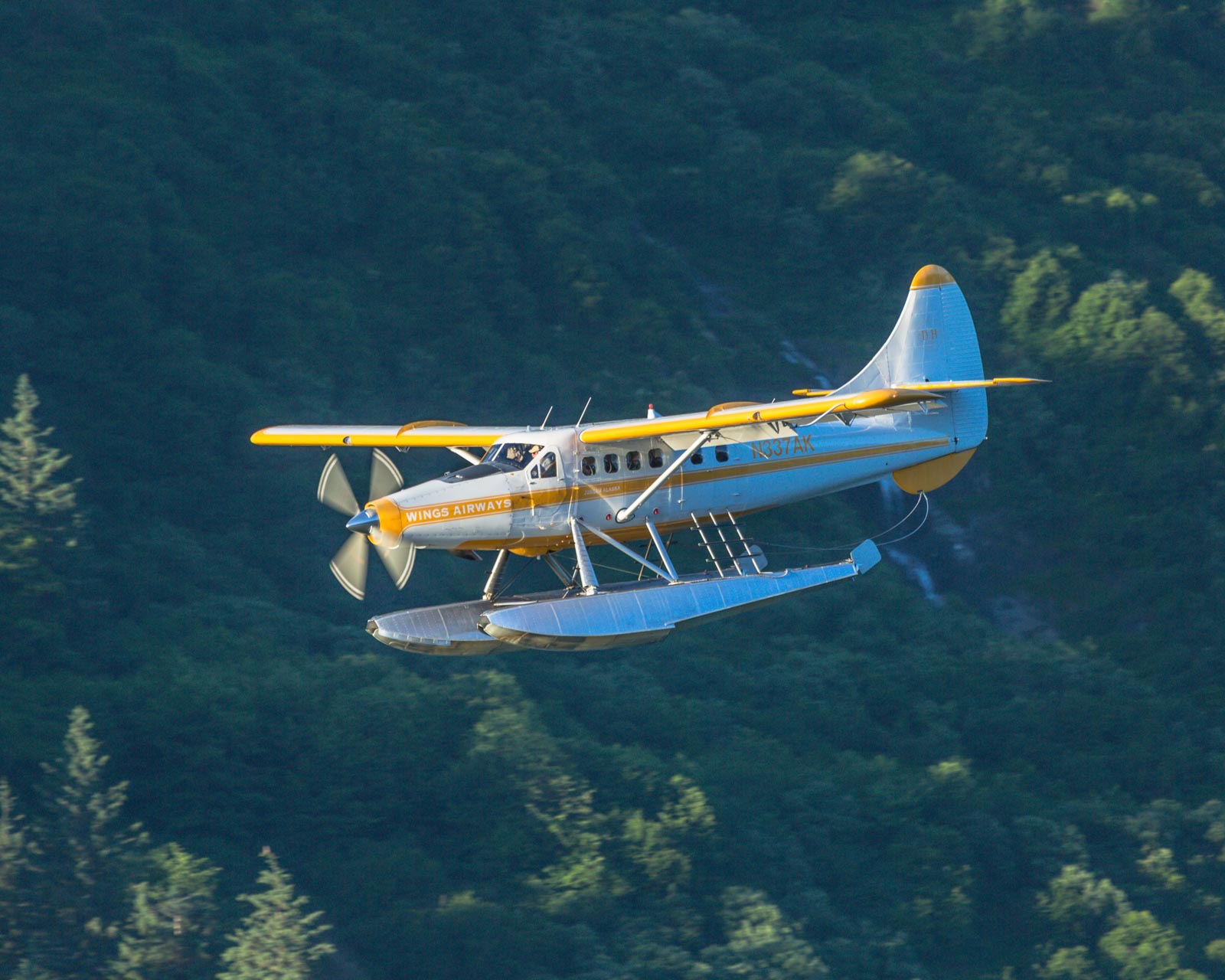
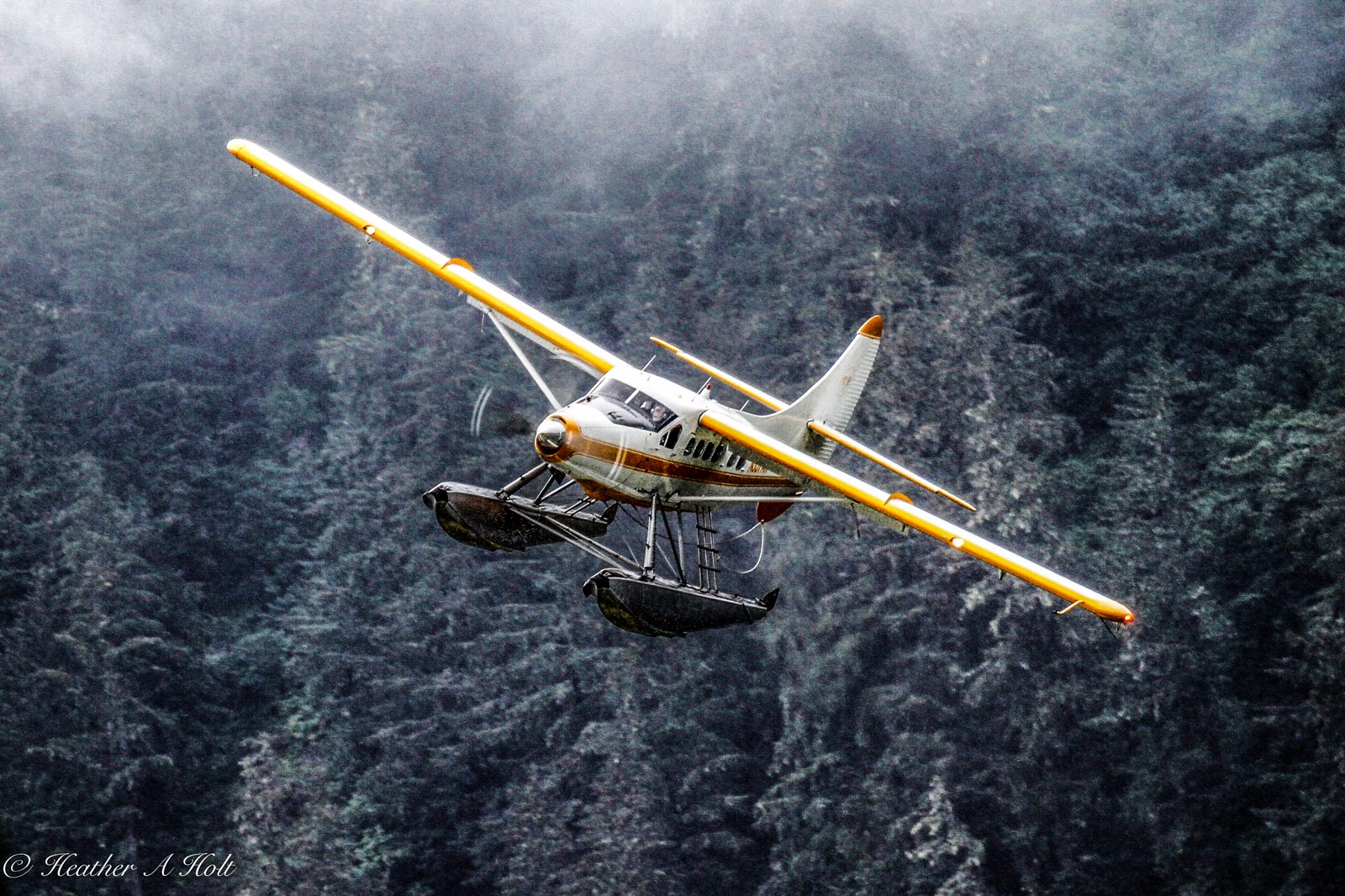
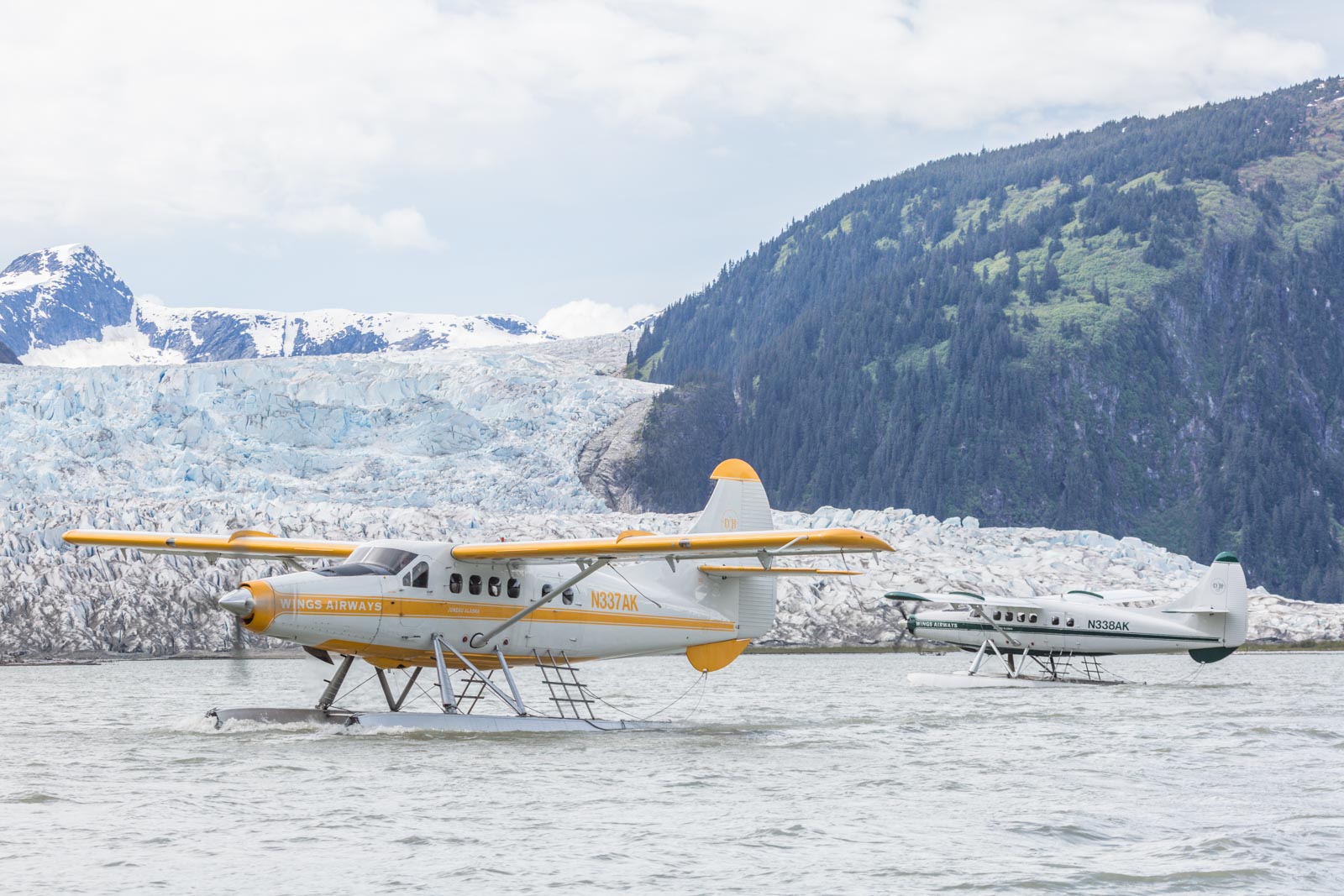
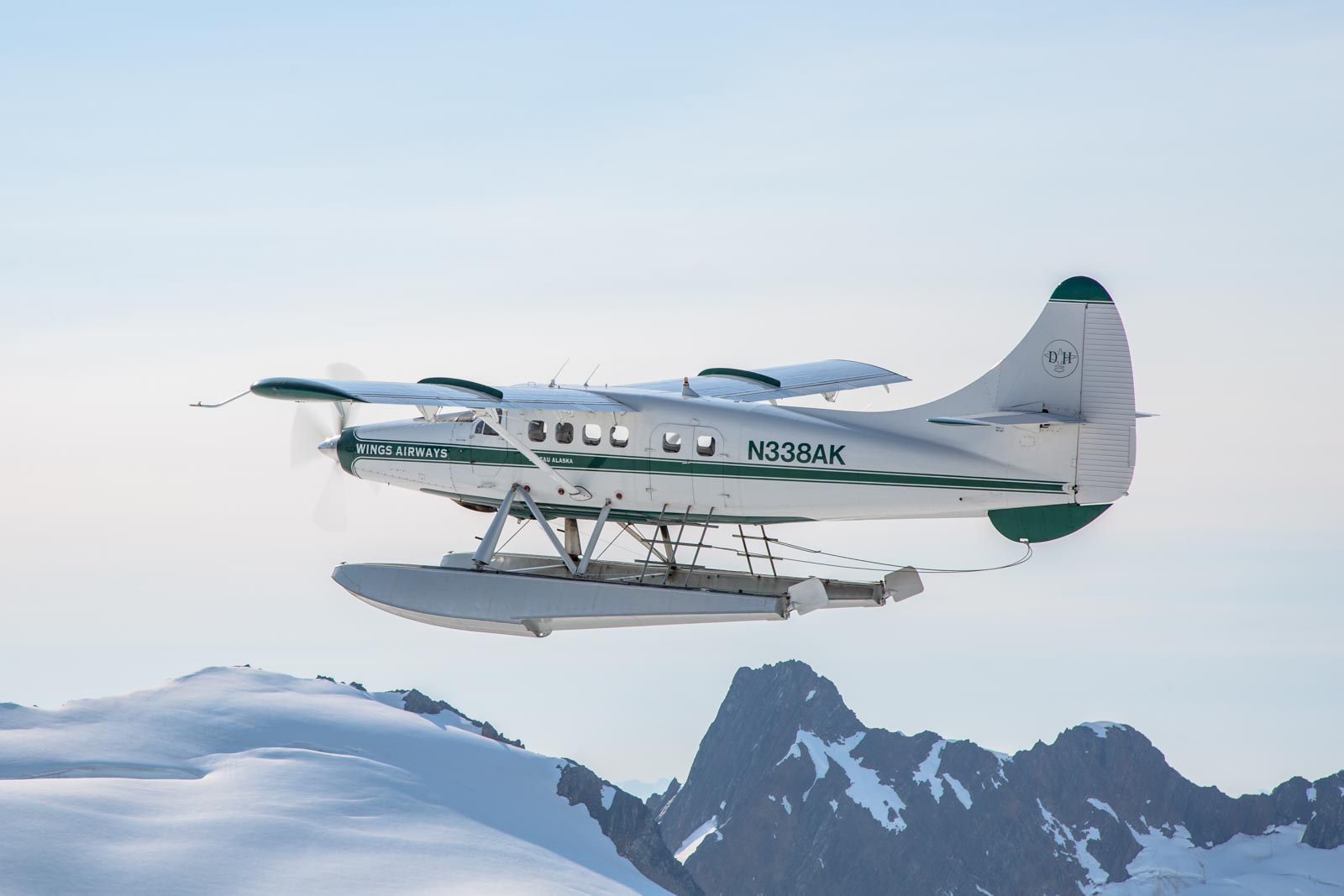
N338AK Green Stripe
Built in 1958, the 262nd DHC-3 Otter on the line was delivered to Petrofina SA of Luanda, Angola on June 26, 1958, then the colony of Portuguese West Africa. It was later registered to Compagnie de Petroleos de Angola. Having served the oil industry in Angola for 12 years, the Otter was purchased by Bannock Aerospace Ltd of Toronto in February 1971, prior to the very long ferry flight from Luanda to Toronto. The Otter passed through Shannon, Ireland, on April 30, 1971, before setting off via Iceland, Greenland and Newfoundland on the long Atlantic crossing. In 1972, 338AK was sold to Newfoundland & Labrador Air Transport Ltd (NLAT) of Corner Brook, Newfoundland. In April 1974, this company became a subsidiary of Air Labrador. Through various inner company transitions, it was eventually sold in January 1989 to Ken Wilson Aircraft Sales Ltd of Toronto. Within a year, it was sold on to Kenneth R. Ward, trading as Ward Air of Juneau, Alaska, to whom it was registered in July 1990 as N62355. Ken Ward himself flew the Otter all the way from Toronto to Juneau on wheels. Its floats were transported via truck and then barge to Alaska where N338AK became a floatplane, flying from Juneau on general charter work.
The Otter continued flying for Ward Air until March 1993, when it was sold to Wings of Alaska. In April 2002, it joined the employee purchase where it operates today under Wings Airways Inc.
N339AK Red Stripe
Built in 1965, the 454th DHC-3 Otter was purchased by the Tanzanian Air Force on April 12, 1966. It remained in Canada under the care of the RCAF until May 1967, when it was crated and shipped to Tanzania, where it was re-assembled and entered service, based at Dar Es Salaam. Of eight Otters in total, three were retained in Canada for training purposes and the other five went to Tanzania and continued in service there until April 1972, when Bannock Aerospace Ltd of Toronto purchased the fleet. The five Otters were flown from Dar Es Salaam, Tanzania to Nairobi- Wilson airfield in Kenya in April 1972. During the month of May, they were prepared for the long ferry flight back to Canada. Four of these Otters passed through Shannon in Ireland on the delivery flight home, the fifth passed through Prestwick in Scotland. N339AK’s full routing was Nairobi – Cairo – Heraklion – Rome – Ashford, England – Fairoaks, England – Prestwick, Scotland through Greenland to its final destination in Toronto.
After overhaul, on July 28, 1972, this Otter was sold on to B.C. Yukon Air Service Ltd of Watson Lake, Yukon. It went on to fly for this company for 17 successful years. In April 1989, it was sold to Temsco Inc. of Ketchikan, Alaska, who had previously also purchased N337AK. It flew as part of Temsco’s large fleet of Otters out of its Ketchikan base until the plane’s sale to Wings of Alaska in Juneau. In March 1993, it made the short move north from Ketchikan to Juneau, flying as part of the Wings of Alaska fleet on its scheduled services and particularly on its summertime charters out of Juneau for summertime guests. In April 2002, it joined the employee purchase where it operates today under Wings Airways Inc.
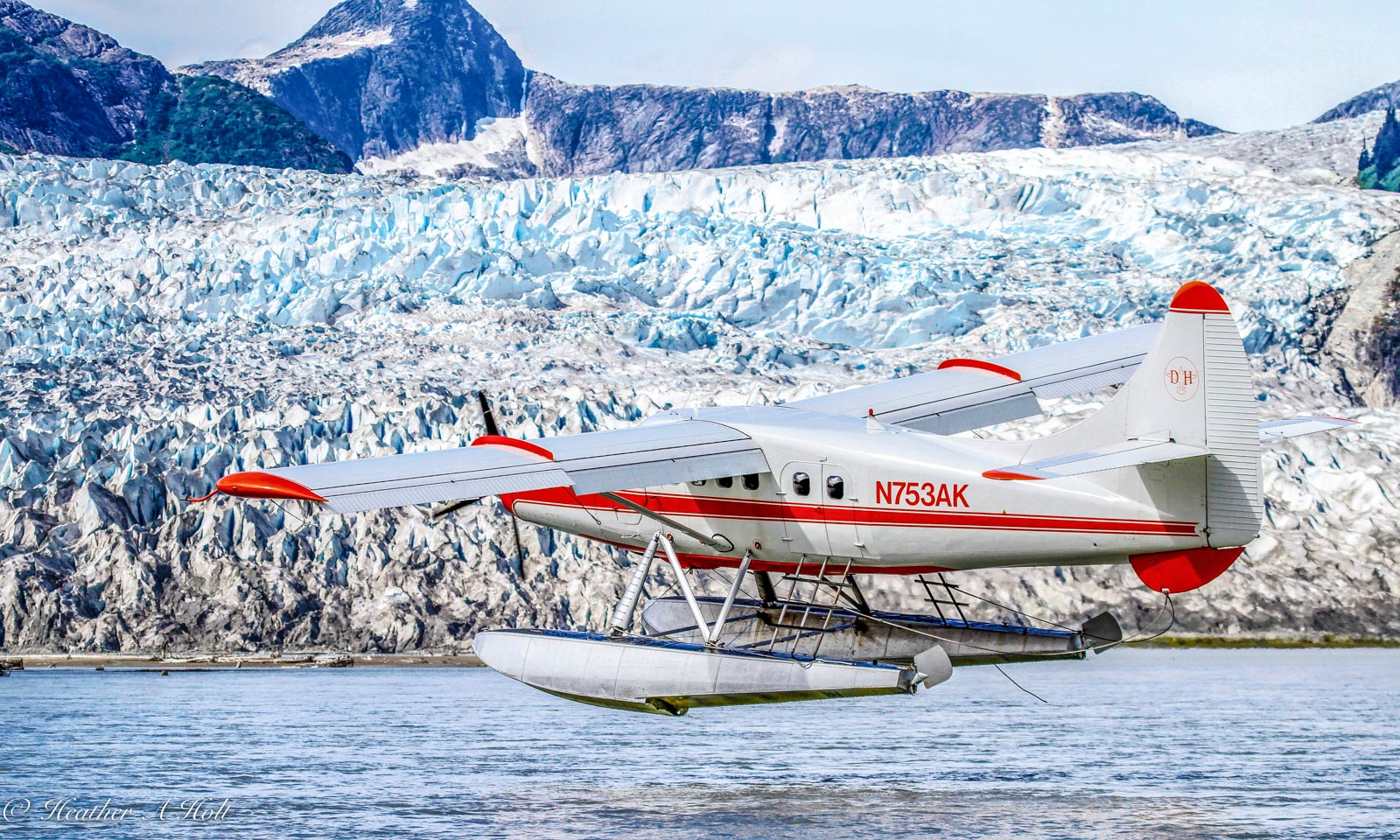

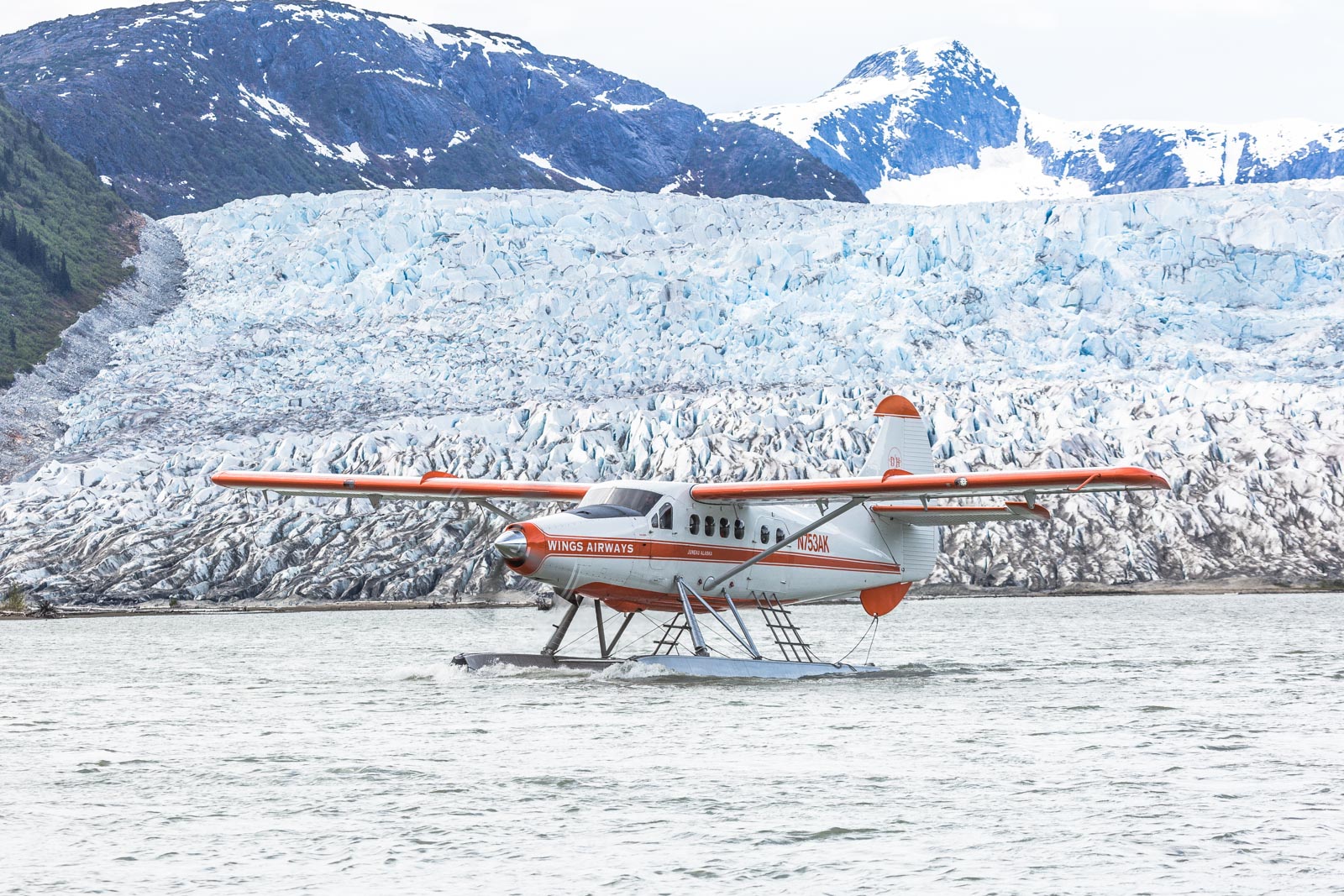
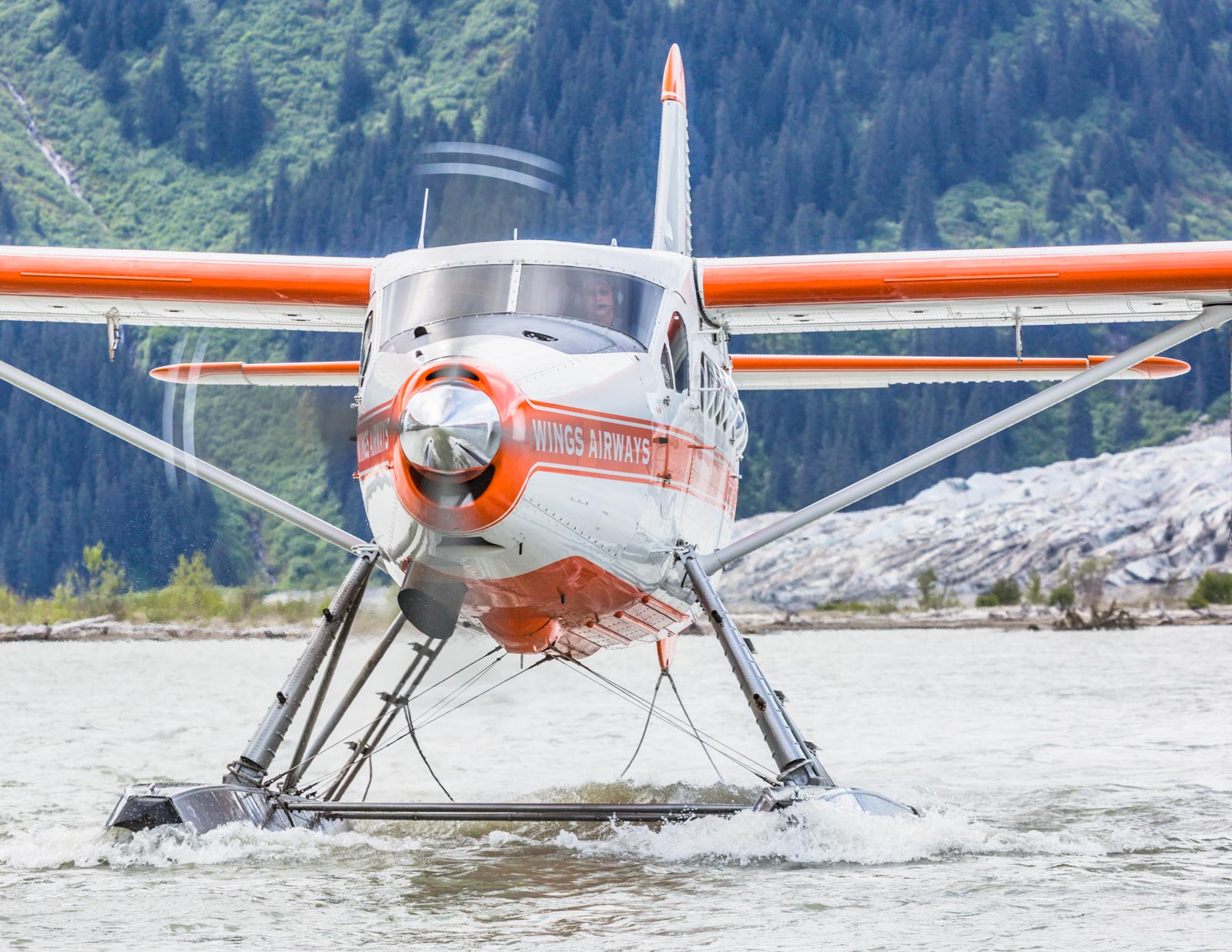
N753AK Orange Stripe
Built in 1953, this 7th DHC-3 Otter built was the first Otter delivered to the Royal Canadian Air Force (RCAF) on March 28, 1953. It was allocated to the Central Experimental & Proving Establishment (CEPE) at Rockcliffe, Ottawa, for the purposes of evaluation of this new type of aircraft to enter RCAF service. It then went to the Fort Churchill, Manitoba Station Flight where it entered service alongside Norseman 789. The diary of the Churchill Station Flight records the many missions undertaken by N753AK. Over its time in Churchill, it operated as a medevac, search and rescue aircraft as well as performing various light transport and SAR duties.
In 1954, the Otter arrived at RCAF Station Rockcliffe, Ottawa to enter service with 408 Squadron, with the major task of mapping and surveying large tracts of the Canadian North. At the end of the summer season, N753AK and the other Otters returned to base at Rockcliffe for the winter, where they were engaged in local area flying and training. Another major task entrusted to 408 Squadron was support of the construction of the Mid Canada Line (MCL) of radar sites along the 55th parallel of latitude, all 102 of them.
In December 1955, N753AK was again transferred to the CEPE at Rockcliffe. Of notable mention was its use to transport the Canadian and Russian Ministers of Fisheries on a tour of Newfoundland fishing ports. The plane then returned to base at Rockcliffe. Between 1957 and 1959, it spent time in storage as a reserve aircraft and saw various improvements and refittings. In July 1960, it joined 102 Communications Unit at Trenton, Ontario. Here it remained until March 1963, when it was one of five RCAF Otters selected by the Canadian Government to be donated to India. Five Otters in total were trucked to Downsview and crated for shipment to India. The official transfer date to the Indian Air Force was April 25, 1963, with whom it served for the next 27 years, until withdrawn from use in 1990. In April 1993, the Indian Ministry of Defense sold the aircraft to La Ronge Aviation Services of Saskatchewan, jointly with Mike Hackman Aircraft Sales of Edmonton. All in all, 14 Otters were returned home from various Indian Air Force bases.
Watson’s Algoma Vacations Ltd, trading as Watson’s Skyways, based at Wawa, Ontario, purchased N753AK. The Otter was based at Wawa and during the summer months was used to fly fishermen to two lodges, Pine Portage and Kaby Lodge. The Otter was also available for general charters and often flew for the Ontario Government’s Ministry of Natural Resources, carrying fire crews and Ministry personnel into the bush. In 2000, it was sold to Hawk Air of Wawa and continued to serve the Ontario bush country, flying fishermen to outpost camps and supplying lodges during the summer season. Wings Airways purchased N753AK in 2007, where it continues to operate today.
**Historical information provided by Mr. Karl Hayes

BOOK NOW | 907-586-6275 | INFO@WINGSAIRWAYS.COM